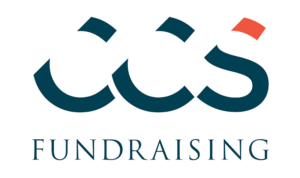Effectively incorporating a strong planned giving program beginning with legacy gifts helps your nonprofit build strong donor relationships, increase immediate and future cash, and establish a foundation for sustainability. During this webinar, our fundraising consultant experts explain the elements of gift planning culture and planned giving strategies that will set your organization up for success.
PRESENTED BY
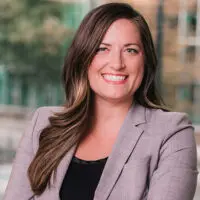
Hannah Yaritz
Senior Vice President
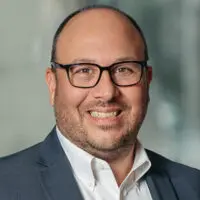
Jeremy Monty
Senior Vice President
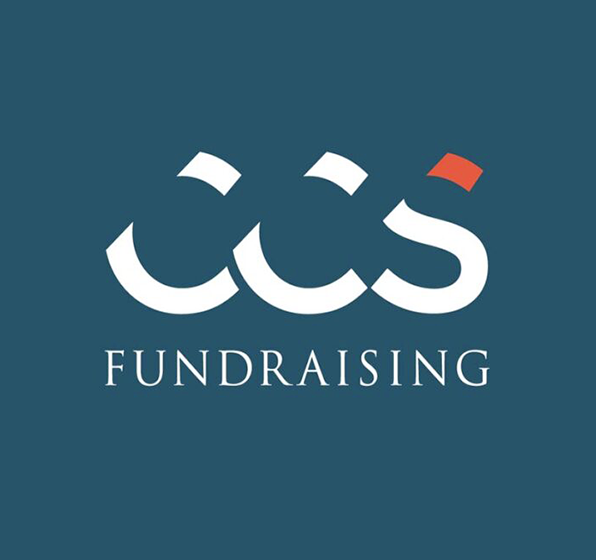
Christopher Dake
CCS Alum
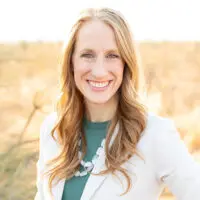
Christianna Robertson
Senior Vice President
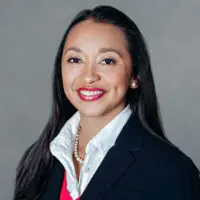
M. Angel Flores
Senior Vice President
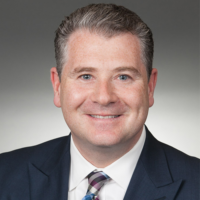
Thomas Kissane
Vice Co-Chair
Frequently Asked Questions (FAQs)
On Getting Started in Gift Planning:
What are some best-practice solutions for organizations that are new to planned giving?
One first step is to send out a survey to your donors (volunteers, alumni, members, etc.) asking if they have included your nonprofit in their Will or Trust. This information can be used to help engage them further, thank them for their support, and learn more about why they made this commitment. A survey can also inform how your organization may allocate budget resources to this effort.
As noted by session participants, gift planning can be overwhelming. We recommend taking this work in “bite-sized pieces.” One way to do this is to identify one project to focus on each week. The project should be manageable and easily accomplished within the dedicated time. Some examples might be:
- Calling 10 donors to say “thank you.”
- Drafting your first gift planning survey.
- Determining how you might segment your donors based on their past giving and age.
- Watching this course for more ideas on how to start gift planning in 1-3 hours a week.
- If you have a major gift officer (or even if you are the only fundraiser!), add planned giving metrics to fundraising goals – this will help encourage collaboration, increase donor engagement activity, grow revenue, and support the hiring of additional staff.
- If you have dedicated volunteer leaders, form a peer committee that can help with developing a case for a planned giving program, marketing plan, and outreach strategy.
- The simplest action to take: ask for the gift. “DONOR, have you considered including ORGANIZATION in your Will?”
- This short case study also describes how one organization partnered with CCS to launch its gift planning efforts.
Where can I find resources for integrating planned giving into the culture of my organization?
Education is a great tool for elevating planned giving within the culture of your organization. Sharing insights, datapoints, and impact stories related to planned giving with your organization’s decision makers and colleagues highlights the importance of this work. Consider demonstrating impact by documenting your first (or 100th!) bequest intention. Celebrate that documentation (and the future gift) with your team and leadership.
CCS’s Make the Case for (Greater!) Investment in Your Planned Giving Program video offers insights into instilling a gift planning culture into your organization and the role staff and volunteers alike play in gift planning.
ON STAFFING AND LEADERSHIP SUPPORT:
What role do volunteers play in gift planning?
Staff who have gift-planning-specific roles typically either manage their own portfolio of donors who serve as a partner to major gift officers in asset-based fundraising.
Volunteers are helpful to serve as an advocate for the mission of your organization and the specific program for which a donor may be asked to support. Volunteers are also great planned gift prospects – would one of your best volunteers serve as a “practice” donor for a planned gift ask?
CCS’s Make the Case for (Greater!) Investment in Your Planned Giving Program video offers insights into instilling a gift planning culture into your organization and the role staff and volunteers alike play in gift planning.
Who is usually best positioned to build relationships with potential major gift and legacy gift prospects?
The Executive Director and staff should take responsibility for developing and maintaining the long-term relationships with the donor. That said, we recommend utilizing any resources possible to begin the conversation, including board relationships.
Board members are often great prospects themselves – consider educating them on the various types of gifts the organization accepts, how these gifts may offer benefits of income or tax relief to them, invite them to join your legacy society if they commit a deferred gift or major gift of assets, and encourage them to share their story with other donors to inspire additional giving.
How do I get started with donor cultivation and stewardship?
When thinking about cultivation and stewardship, we encourage asking the donor what is important to them. Utilize their insights to tailor a plan that’s important to them. Some donors are going to want (and need) higher touch points, others will want minimal contact.
For more helpful tips on donor cultivation, check out this article on leveraging annual giving and this article on cultivating prospects into donors.
ON Gift Acceptance Policies & Gift Management:
What is a windfall policy?
A windfall policy guides an organization when they receive a large unrestricted gift that they were not expecting. Creating this policy includes determining a certain percentage of the gift to be allocated to specific areas of the organization such as general operating, endowment, or capital improvements for immediate-use and longer-term use.
What organizations provide resources for updating or drafting gift acceptance policies?
The following organizations are known for offering best practices and guidelines:
- National Association of Charitable Gift Planners (CGP)
- Association for Fundraising Professionals (AFP)
- Council for the Advancement and Support of Education (CASE)
- Association of Healthcare Philanthropy (AHP)
- Your local gift planning association may also offer helpful resources
Should my organization count both revocable and irrevocable legacy gifts during a campaign?
CCS recommends following CGP’s guidelines which have counting categories for immediate use (cash) gifts and pledges, revocable deferred gifts, and irrevocable deferred gifts during a campaign. They even offer tables to get you started.
Before getting into the counting, your organization should carefully consider what its fundraising needs are and what dollar amount (fundraising goal) would support those needs. If your organization has a greater immediate need, the cash or irrevocable deferred gift goals may be higher than the revocable deferred gift goal since revocable gifts can change, and deferred gifts generally take some time before they are realized and received as cash by the organization.
By counting all gifts, your organization is demonstrating inclusivity of donors at all gift levels and types. This enhances your gift planning culture and will increase revenue overall.
Can a revocable deferred gift (legacy gift, bequest) only be recognized in our financial books when paid?
Revocable gifts can only be counted in your financial books once they are paid (or realized.) Irrevocable gifts should be counted in financials once all proper documentation is complete. CCS recommends working closely with your finance team or accountant to discuss gifts of assets and deferred commitments.
While some gifts may not be able to be “booked” by finance, it is important you’re your fundraising office carefully tracks and notates these gifts in your database. This will support donor stewardship and recognition even if the gift is not part of the formal accounting process… yet!
How do you recommend navigating database constituent records if the ‘primary’ donor/member/volunteer dies, but we want to maintain a relationship with the ‘secondary’ partner/family/spouse?
We recommend maintaining the record in your database until the family asks otherwise. If they do ask you to remove the deceased donor from your database or outreach, respect their decision and archive the record. Some families will want to continue engagement to honor their loved one, or because they too are committed to your mission.
If your database is used for multiple purposes by different teams, consider finding a way to “tag” a constituent record exclusively for fundraising or gift planning to avoid confusion.
ON Prospects & Conversations:
How likely are annual donors, who have committed a legacy gift, to give to a campaign?
Research from Dr. Russell James shows that after a donor makes a legacy commitment, their annual giving increases by 75%, on average. Those same donors are also 17% more likely to give a major gift within two years after making their legacy commitment.
When asking for campaign gifts, we encourage blended gift requests to support immediate needs (cash, appreciated assets) and deferred gifts (bequest intention) to support the longer-term future.
What is the best age to begin planned gift conversations with donors?
Giving USA’s Leaving A Legacy report indicated that people first establish a Will in their mid-40s and include a charity in their Will for the first time in their early 50s. We recommend connecting with donors in their late 30s/early 40s with some of those initial conversations. For example, some colleges and universities are engaging their alumni in these age groups to ask for a very modest percentage (5% or less) of their estate be gifted to the school. That 5% may not be much today but by the time the gift is realized, it is likely to be considerably more.
What is the best way to ask someone for their birth date?
Organizations use a number of tactics to open the door for this question. For example:
- Database updates – “I’m doing an update of our donor records. Would it be okay if I asked you for some updated information?”
- Stewardship effort – “I’d like to start sending birthday cards to the donors I work with; would you be willing to share your birth date with me?”
Wealth screens may also pull birth date information if your organization utilizes this type of tool. White Pages is also a great tool for this information.
Keep in mind that this is personal information, and some donors may not be willing to share and for others it may not be appropriate to ask.
ON Deferred Gifts – Bequest & Legacy Gifts:
When are most wills and trusts updated?
Wills and Trusts are often updated closer to the death of the owner. Other data also indicates that when a charity is added in the earlier versions of the Will/Trust they will continue to stay within the documentation, especially if the organization does a great job with stewardship.
Should my organization accept gifts of real estate?
In general, real estate can be a great asset to accept as a philanthropic gift. Your gift acceptance policies and procedures should offer guidance as to what considerations your organization would take prior to accepting this asset. If real estate is not included in your policies currently, meet with your team, board, or other strategic partners to determine whether accepting real estate as gifts is right for your organization.
What is a blended gift proposal and are organizations using them?
Blended gift proposals are a tool used to ask a donor for one or multiple gifts in support of one or multiple needs within the organization. For gift planning, this usually means asking for a gift to support an immediate need (cash or asset today) and a longer-term initiative (gift for the future).
In the last healthcare campaign with which CCS Gift Planning Practice Group leader Christianna Luy assisted, the development team almost never asked for a multi-year campaign commitment unless it had a blended component. They wanted the organization to be stronger through the campaign, not just because of the campaign. Start easy by asking for cash and a bequest. For individuals with lots of stock, CCS encourages reading about a “charitable swap”—a powerful tool where the donor gifts the stock, saves capital gains taxes, and purchases the stock with the cash they would have gifted you.
How do I know if my nonprofit is ready to start a gift annuity program?
The American Council on Gift Annuities provides great insight on considerations for organizations who are interested in getting started with a gift annuity program.
Not all nonprofits can or should issue charitable gift annuities (CGAs) themselves. These gifts are guaranteed lifetime payments, and the organization must be willing to take on the responsibility and risk while being financially resilient enough to do so.
While establishing and managing a CGA program may not be a priority for a nonprofit based on experience and capacity, there are third-party vendors that can support these efforts, easing the burden on the nonprofit.
ON DONOR RECOGNITION:
How long do organizations typically keep deceased legacy donors on their recognition lists?
Recognition lists are a great stewardship tool, help with donor management, and are a simple way to express gratitude. Recognition lists (as the “physical item”) vary. From a practical standpoint, consider cost when listing donors. If you are updating a physical donor wall every two years, you may consider having fewer names on the recognition list. However, if your recognition list is largely digital like an annual report, keep more names on the list.
It is most important that the donor has given you permission to include their name, or that they have indicated another way they would like to be recognized. Organizations will often note deceased donors with a symbol (such as: + or *) after their name. Other organizations will remove names but include a sentence along the lines of: “A special thanks to the 27 donors who have impacted ORGANIZATION since their passing.”
If you receive a gift from a donor who has passed and hasn’t indicated if they would like to be recognized, connect with their family, the estate executor, or any other personal contact you may be aware of to determine what would be most appropriate. If you are unable to access those close to the donor, follow practices aligned with other donors who have passed.
What are the best practices for including expected but not documented legacy gifts on a donor listing?
It is important to document expected gifts. In fact, recognition in an annual report could encourage some donors to document their legacy gift. Documentation helps the organization plan for its future, and it helps you steward the donor in the ways that are important to them.
